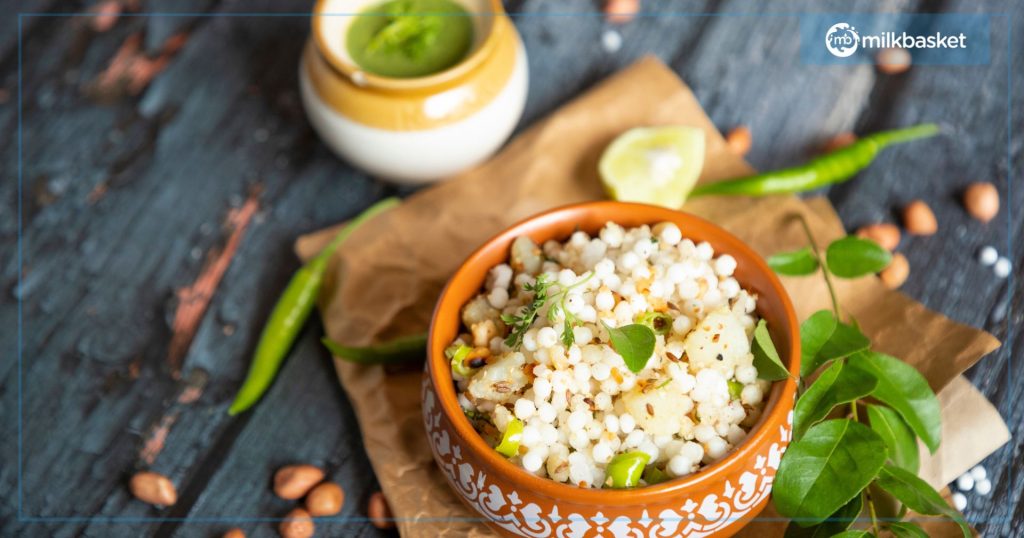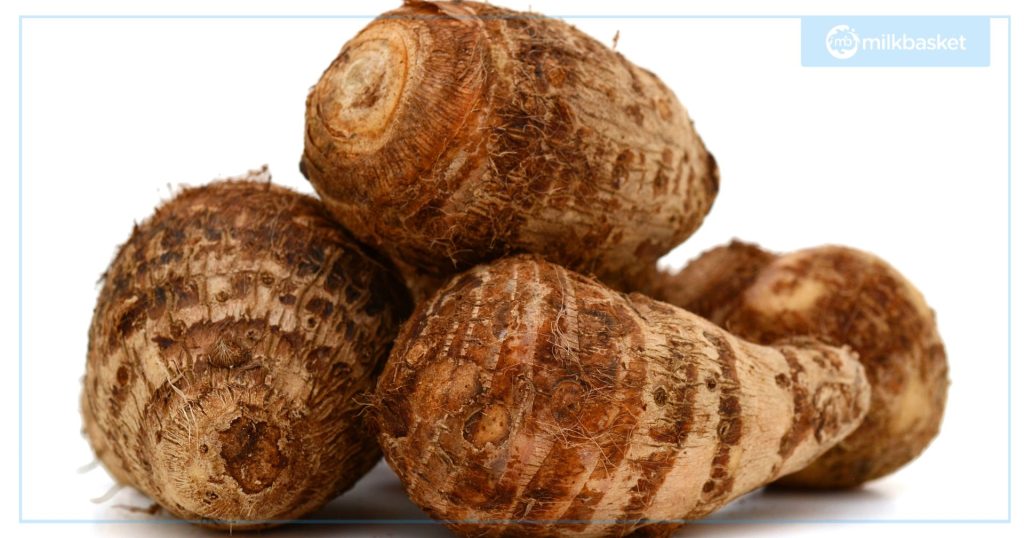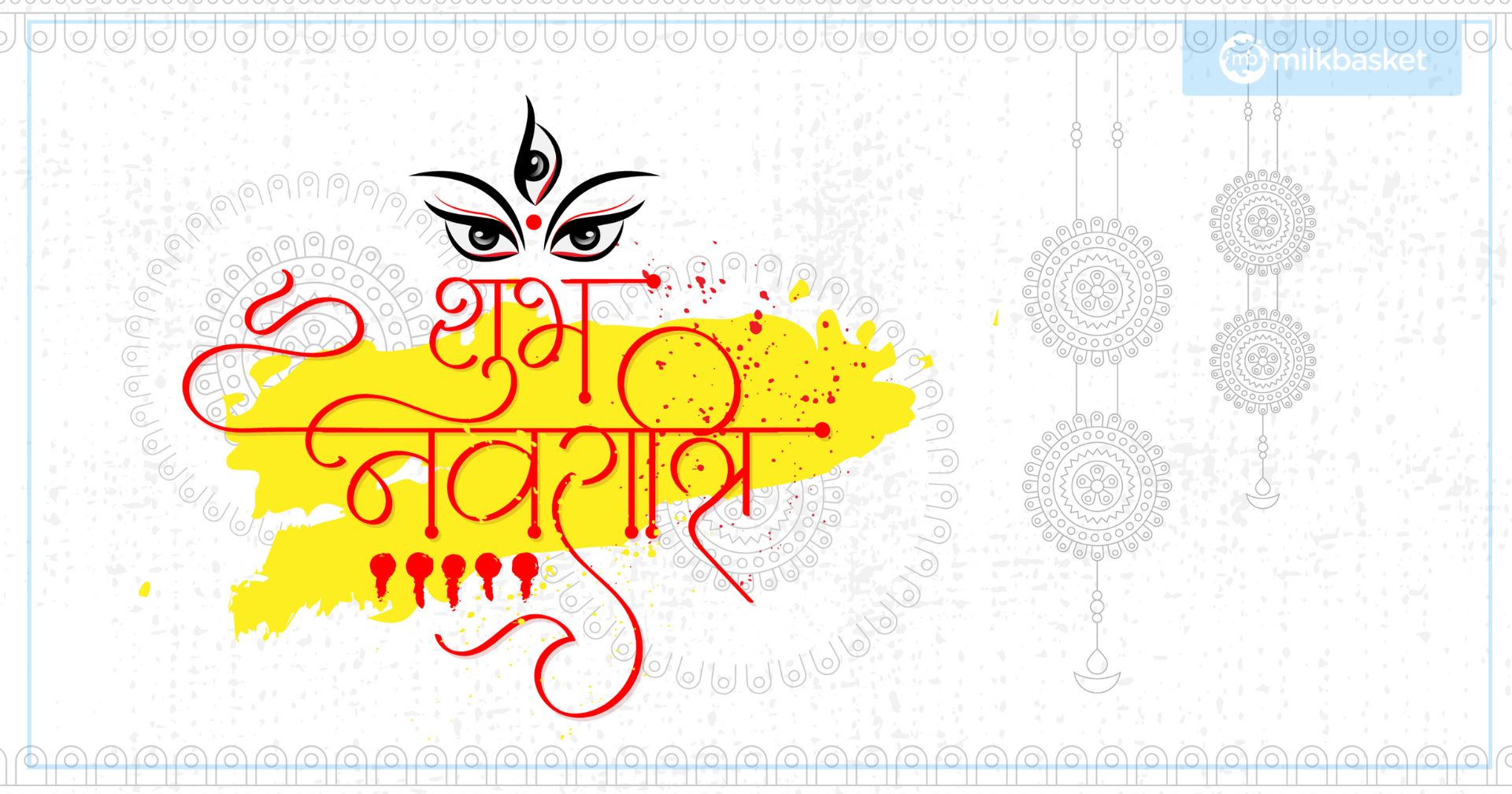Navratri - The Festival, The Food & The Fasting
Navratri is the festival of dancing in the West, festival of food, family and fun in the East and above all it is the festival of fasting, eating certain foods and worshiping the reincarnation of goddess Adi Shakti. Navratri is celebrated all over India and many other parts of the world. This navratri let us help you get your fasting foods sorted with the help of recipes which are easy to make, nutritious and a crowd pleaser.
What Is Navratri And Why Is It Celebrated?
Navratri, also known as the nine nights of goddess Durga, is celebrated all over India with fervor. The festival is celebrated in honor of the goddess Durga, who is considered the mother and protector of India. According to Hindu mythology, Goddess Durga killed the buffalo demon Mahishasura after 9 days and 9 nights of fierce battle. The nine nights of Navratri are celebrated during the month of Ashwin (September-October), after the monsoon rains end. During Navratri, families observe a strict fast for nine days. During the fasting period, there are only certain things an individual can eat. Go ahead and read on to know some of the tasty recipes you can make during Navratri, this year.
Recipes For Fasting During Navratri
There are certain restrictions on foods during this particular fasting period. Fasting helps your body detoxify, aids digestion and helps you resist temptation of particular foods. You are to refrain from having any foods that are grown above ground, table salt, onions and garlic as well.

- Aloo Tamatar ki sabzi
Aloo tamatar (potatoes and tomatoes) are a staple, easy to cook and a delicious balanced meal. For this you will need
Ingredients (for 2 servings)
- 2 medium potatoes or 1 extra large potato
- 4 to 5 medium tomatoes
- 1 tsp cumin seeds
- ¼ tsp red chilli powder
- ¼ tsp black pepper powder
- 1 cup water
- 1 tbsp oil or ½ tbsp ghee
- Coriander for garnishing
- Rock salt (sendha namak) as per taste
Instructions
- To a pressure cooker or pan. Add about 1.25 to 1.5 cups of water and add the potatoes to it to par cook them.
- Let the potatoes cool and peel them.
- Dice the potatoes
- Heat the oil or ghee in a pan
- Once hot, add 1 tsp of cumin seeds and let it crackle
- Add 4-5 medium chopped tomatoes
- Saute till the oil is visible
- Add ¼ tsp red chilli powder, ¼ tsp black pepper powder and rock salt as per taste
- Mix well and add the potatoes
- Mix in 1 cup of water
- Stir and let the potato tomato curry cook it for 7-8 minutes or more on low flame, till it is slightly thick
- Mash some of the potatoes with the help of a spoon
- Garnish with coriander leaves
- Serve it with vrat ki roti or rajgire pooris.

- Sabudana ki khichdi
Sabudana or sago or tapioca pearls are made from the roots of the cassava plant. This is an easy, tasty snack but it requires some practice. If this is your first time please follow all the instructions so as to have a tasty, fluffy and avoid a lumpy sabudana khichdi. Sabudana needs to be soaked for sometime before it can be used, so depending on the the quality of the sabudana, you soak it. A test beforehand helps to understand how long it takes for the sabudana to become.
Steps to prepare sabudana for the khichdi
- Rinse 1 cup of sabudana a few times, until all the starch has been washed out. You can do this either in a colander or in a vessel that you can soak it in. Thereafter soak the sabudana in about 1 to 1.5 inches of water or till the first line or a little above of your index finger.
- You can soak this for 2 to 3 hours or more depending on if the sabudana has become soft or not. If it hasn’t, we recommend soaking it overnight.
- To check the softness, take the sabudana and press it in between your fingers, if it is easily mashed, it’s ready to be used. If it is hard in the centre then add a few tablespoons of water and cover it for 30 minutes.
- Once ready, drain the water from the sabudana, to avoid a pasty and mushy sabudana khichdi.
Ingredients (for 3 servings)
- 1 cup sabudana (150 grams)
- Water to soak the sabudana
- 2 medium potatoes
- ½ cup roasted peanuts
- 8 to 10 curry leaves – optional
- 1 tsp grated ginger – optional
- 1 green chilli – chopped
- 1 tsp cumin seeds
- ¼ cup grated coconut – optional
- ½ to 1 tsp sugar or as is required
- ½ to 1 tsp lemon juice or as is required
- 3 tbsp peanut oil or ghee or oil of your choice
- Rock salt (sendha namak) – as per your taste
- 1 to 2 tbsp chopped coriander – optional
Instructions
Preparation
- Rinse, soak and drain sabudana as instructed above. Keep them aside.
- Boil the potatoes, peel them and keep them aside.
- In a pan dry roast peanuts till brown. Once cooled, grind them coarsely in a dry grinder or in a mortar and pestle.
- Once you have all of the above prepared, mix the coarsely ground peanut powder, salt, sugar and the drained sabudana together in a bowl.
Making of Sabudana Khichdi
- Heat peanut oil or ghee in a heavy bottomed pan. Once hot, put in the cumin seeds and let them crackle and become brown.
- Now add green chillies and curry leaves. Fry for a few seconds until fragrant. Add the grated ginger thereafter. These ingredients are optional and can be skipped if you wish to omit them from the recipe.
- Saute the ginger till the raw smell has gone. To this add the chopped boiled potatoes and saute for a minute or two.
- Add the sabudana mixture to the pan and keep stirring often, while on a low flame.
- Once the sabudana is translucent, it is cooked. Keep an eye on the sabudana to avoid it becoming hard from being overcooked.
- Once done, turn off the flame, add lemon juice and chopped coriander. Mix well.
- Serve hot or cold.

- Dahi arbi
Arbi or colocasia roots also known as taro roots are great for fibre and excellent for digestion. They are high in vitamin C and E, are loaded with antioxidants and absolutely cholesterol free.
Ingredients (for 4 servings)
- 250 grams arbi (taro or colocasia roots)
- 1.5 cups of watery curd. In ¾ cups of curd add ¾ cup water
- 1 tsp ajwain (carom seeds)
- 1 tsp coriander powder
- ½ tsp red chilli powder
- ½ tsp amchur powder (dry mango powder)
- Mint leaves for garnishing
- 2 to 3 tbsp oil
- Rock salt (sendha namak) as per your taste
Instructions
- Cook arbi till they are firm but cooked.
- Peel and chop the arbi, keep it aside.
- Heat oil in a heavy bottomed pan.
- Fry the ajwain (carom seeds).
- Lower the flame and add the spices that have been listed above.
- Add the arbi to this and fry it till they’re slightly browned.
- Add 2 cups of water and the thin curd mixture.
- Keep stirring often so as to avoid the splitting of the curd.
- Bring it to a boil and simmer it for 15 minutes
- Add rock salt as per your taste
- Garnish with chopped mint leaves and serve hot
These are just some of the very many recipes you can try during the navratri fasting period. You can get all these ingredients and so much more on Milkbasket, the best online grocery delivery application. You get your deliveries by 7 AM.
Categories
Popular Posts
-

4 Eco-Friendly Decorations for Ganesh Chaturthi
Spread the loveLooking for sustainable eco Ganpati decoration ideas as Ganesh Chaturthi approaches on August 26, 2025? You’re not alone in wanting to celebrate Lord Ganesha while protecting our environment. This festival season, you can create beautiful decorations that honor tradition without harming the environment. Milkbasket understands your need for convenient online grocery delivery during […]
19 Aug 2025 read More... -

Milkbasket – A Revolution In The Online Grocery Delivery Services In India
Spread the loveThere’s no denying the fact that the pandemic has drastically changed the way people spend their time online, buying everything through various online retail platforms with the convenience of home deliveries in India. Milkbasket, with it’s features has proven to be a revolution in the online grocery delivery services in India. While stepping […]
08 Jul 2022 read More... -

Milkbasket’s Latest DVC Campaign Is Out, And It’s Quirky And Relatable As Heck!
Spread the loveThe year 2021 was all about patience, resilience, and the grind it takes to get back up from a worldwide slump that the COVID-19 pandemic had hit us with. It made us all revisit our roots, recalibrate our priorities, and strengthen our foundations. With the better part of 2022 gone into slowly spreading […]
28 Sep 2022 read More... -

Nabhi Chikitsa or Belly Button Therapy: The Simple Health Secret You NEED To Know!
Spread the loveOur Navel or Belly Button (scientific name Umbilicus) is believed to be the centre of our life force. Most of us take it as just another part of our body not knowing its deep, thrilling world. In ancient Hindu healing practices, the Navel is considered to be the most important point of the […]
08 Sep 2022 read More...





